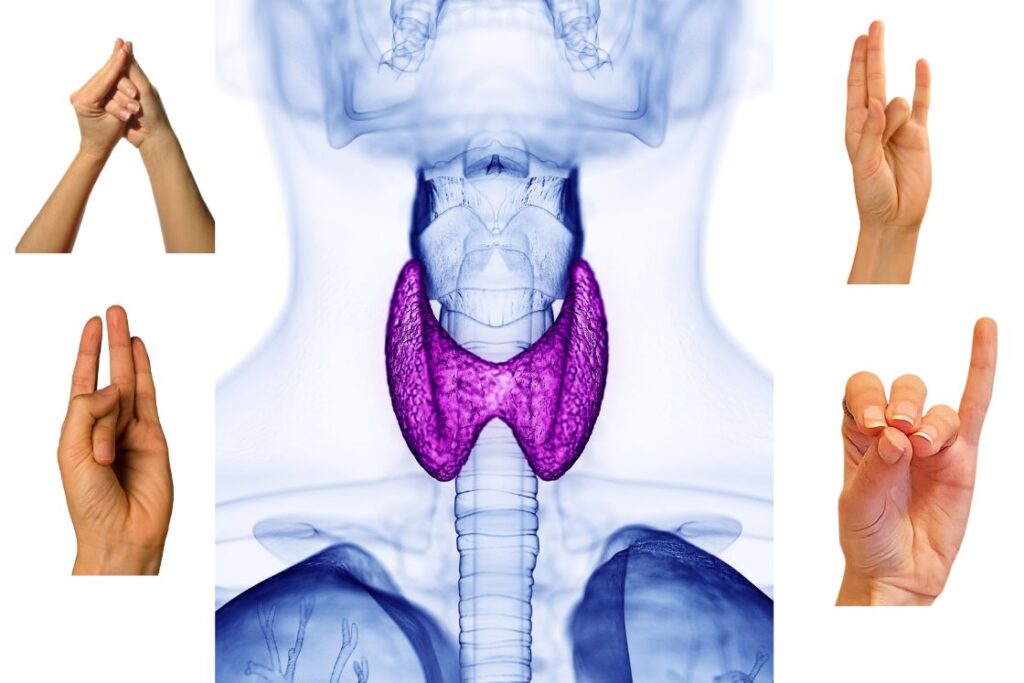
In the practice of yoga, mudras are often used to stimulate the flow of energy through the body by means of various hand gestures.
Mudras are powerful hand gestures that can affect different parts of the body. By applying pressure to specific points on the hands, mudras can stimulate the corresponding organ system and improve its functioning.
One area of the body that can benefit greatly from mudras is the thyroid gland. This small but mighty gland in the neck plays a vital role in regulating metabolism, growth, and development, and imbalances can lead to a range of health issues.
In this article, we’ll explore how specific mudras can help support thyroid health (hypothyroidism and hyperthyroidism) and provide instructions on how to practice the thyroid mudra for maximum benefits.
How can mudras help with the thyroid?
Mudras can help with the thyroid by stimulating specific acupressure points on the hands that correspond to the thyroid gland. By applying pressure to these points through mudras, you can help improve the flow of energy to the thyroid gland, which can help regulate its function.
Additionally, mudras can help reduce stress and promote relaxation, which can be beneficial for people with thyroid conditions. Stress can worsen thyroid symptoms, so practising mudras as a relaxation technique may help alleviate symptoms and improve overall well-being.
The Ayurvedic View
To know how mudras can help in thyroid conditions, we can understand it from an Ayurvedic context as well.
According to Ayurveda, imbalances in the three doshas (Vata, Pitta, and Kapha) can contribute to various health issues, including thyroid problems. Mudras, which involve various hand gestures, are believed to help balance the doshas and promote overall health and well-being.
The science of mudras and doshas is based on the five elements of the body (Space, Air, Fire, Water, and Earth) and how they combine to form doshas which affect our health. Mudras are hand gestures that correspond to these elements, and by using them we can balance the doshas in our body and improve our health.
Specific mudras, such as the Gyan mudra, are particularly beneficial for balancing the Vata dosha, which is associated with nervous system disorders and hormonal imbalances, including thyroid conditions. By practising mudras that balance the Vata dosha, you can help regulate the function of the thyroid gland (hypothyroidism).
Similarly, the Prana mudra balances the Kapha dosha, which is associated with sluggishness and congestion. By balancing Kapha, you can help reduce the risk of thyroid problems and improve thyroid function.
Mudras for Thyroid

If you’re suffering from thyroid, then practising mudras linked with the middle and index finger are beneficial. These mudras focus on the “ether” and “air element” of the body which is mainly associated with the throat region where the thyroid gland is located.
Udana mudra, shankh mudra, and shunya mudra are three hand mudra that has been found to be particularly beneficial for thyroid health. By practising these mudras regularly, individuals with thyroid conditions can potentially improve their symptoms and promote balance in the body’s energy system.
Mudras for thyroid should be incorporated with Ujjayi breathing for better results. The practice of Ujjayi increases the efficiency of the endocrine system, which is responsible for the production and regulation of hormones, including those related to the thyroid gland. To get the most benefits from mudras for the thyroid, it is recommended to practice them daily for at least 15-20 minutes.
1. Udana Mudra
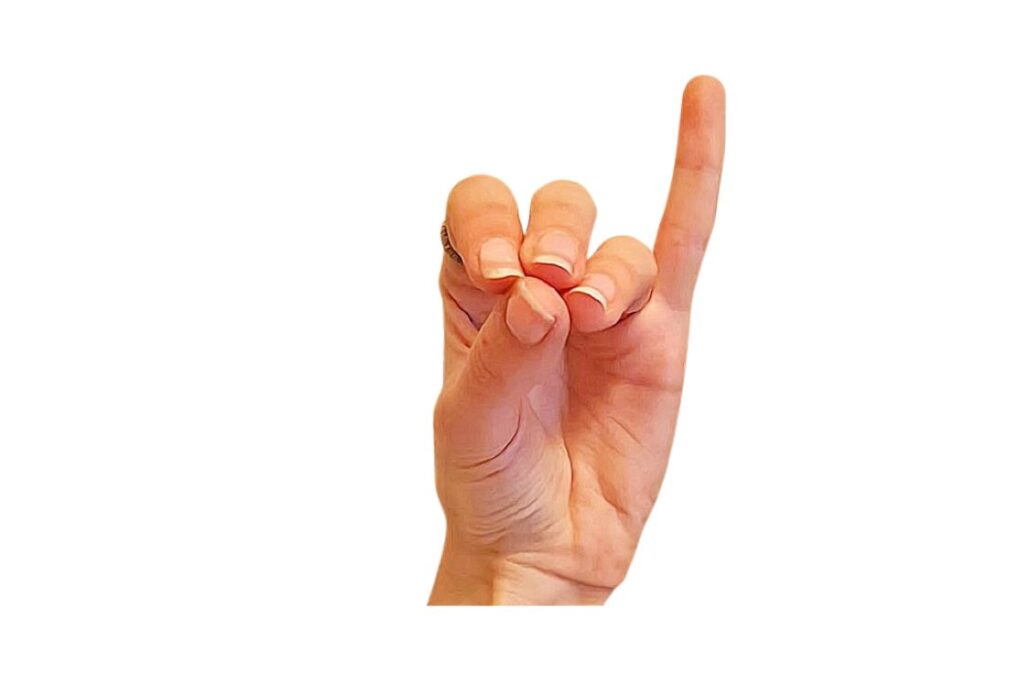
Udana mudra helps to balance the throat chakra, which is associated with the thyroid gland. This mudra stimulates the thyroid gland and regulates metabolism, which can be helpful for both hypothyroidism and hyperthyroidism.
Procedure: Udana mudra is formed by touching the tips of the index finger, middle finger, and ring finger together with the thumb tip while keeping the little finger. Practice this mudra for thyroid with both hands for 10 minutes every day.
2. Shankh Mudra
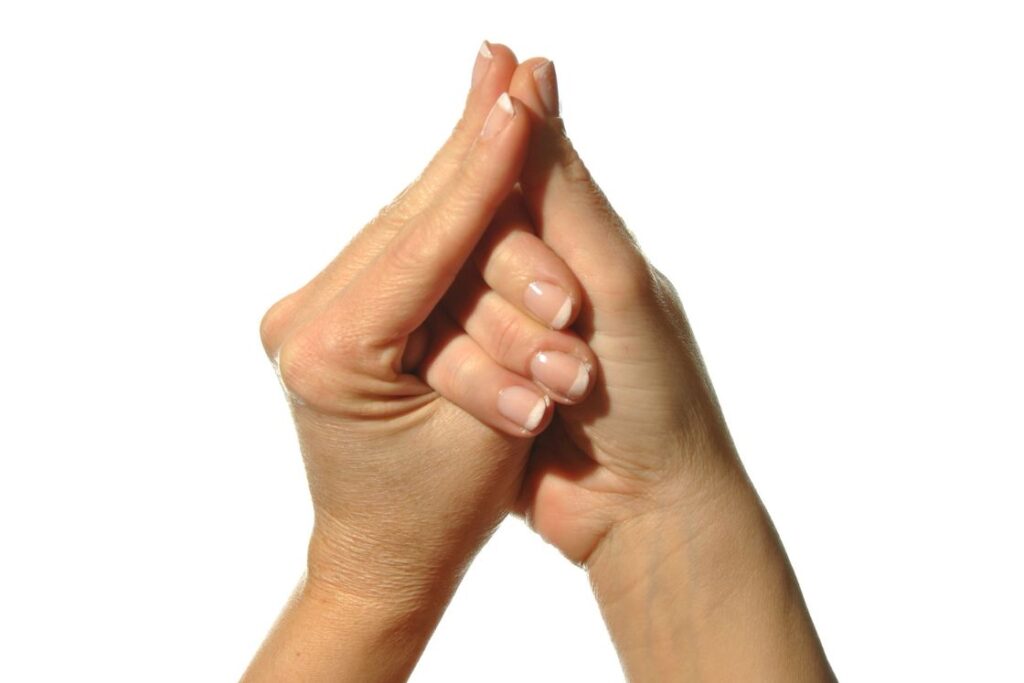
Shankh mudra involves reciting the meditative sound of OM, which produces vibrations that stimulate the Thyroid gland. Thyroid gland secretes the hormone thyroxine, hence the consistent practice of Shankh mudra with OM chanting can relieve hypothyroidism. Therefore, Shankh mudra is considered very helpful for thyroid disorder patients.
To practice Shankh mudra effectively for thyroid problems, one should follow these steps:
- Sit comfortably in a Vajrasana (kneeling position) with your spine straight.
- Place your hands on your stomach, with your fingers pointing up and your palms facing your body.
- Wrap your right hand around your left thumb.
- Keep your left fingers straight and pointing up.
- Gently curl your right thumb around your left thumb.
- Touch the tip of your right thumb to the middle finger of your left hand.
- Bring your hands to rest on your breastbone, forming a conch shape.
- Close your eyes and take deep breaths while chanting the sound “OM” in your mind.
- Repeat the mudra for 15 minutes, three times a day, preferably in the morning.
3. Shunya Mudra
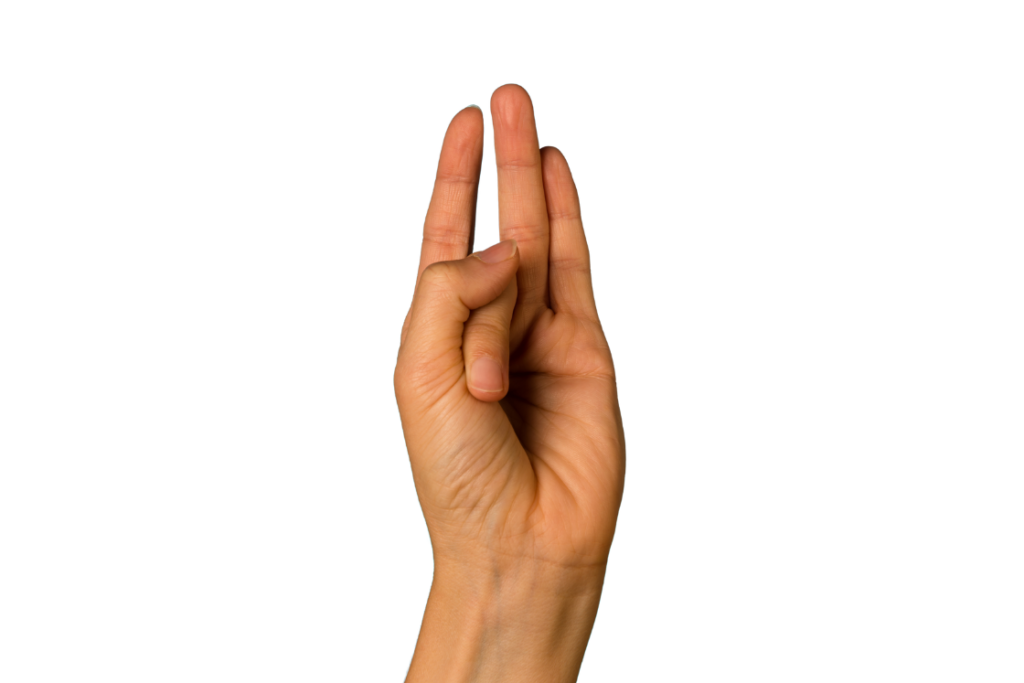
Shunya mudra is helpful for hyperthyroidism. It reduces the ether element in the body. For this mudra, cross the thumb over the middle digit of your middle finger. This contact balances the thyroid gland’s overactive hormone secretion.
To perform Shunya mudra for thyroid:
- Sit in a comfortable position with your spine straight and your shoulders relaxed.
- Bring your both hands in front of you and bend your middle finger to touch the base of your thumb.
- Use your thumb to gently press the middle finger down while keeping the other fingers extended.
- Take slow, deep breaths in through your nose and out through your mouth.
- Hold the mudra for 5-15 minutes, focusing on your breath and the sensations in your body.
- Repeat the mudra 2-3 times a day.
4. Surya Mudra
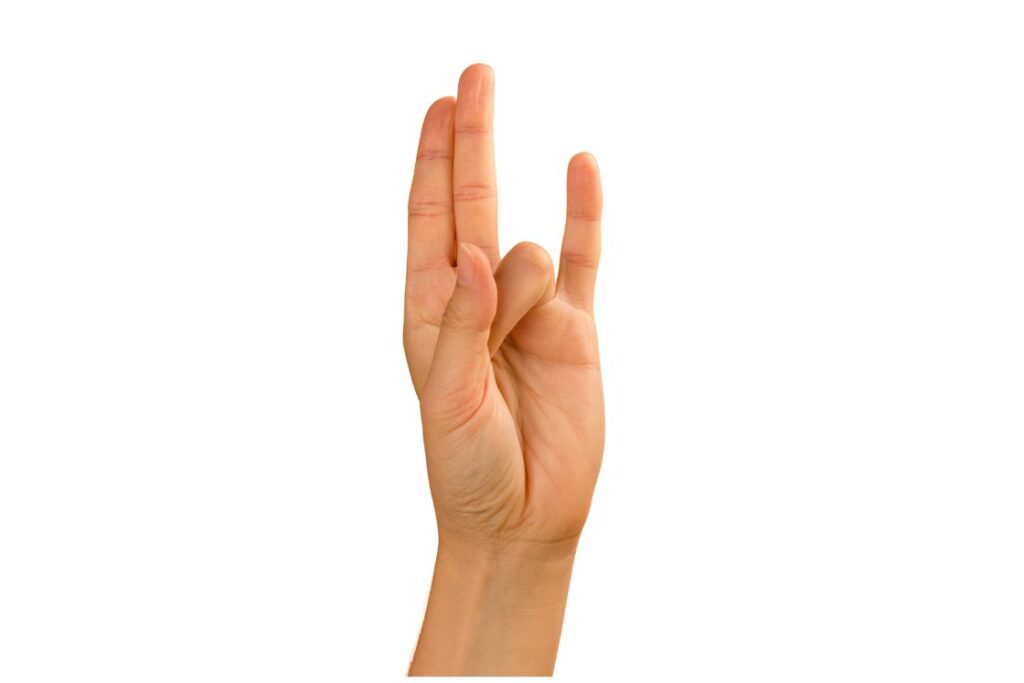
Surya mudra is associated with the fire element, which can help to activate and stimulate the body’s metabolism. By practicing surya mudra, the body temperature can increase, which may be helpful for those with hypothyroidism, a condition in which the thyroid gland does not produce enough hormones.
To perform surya mudra, join the ring finger to the base of the thumb while keeping the other fingers straight. It is recommended to practice this mudra for 10-15 minutes, twice daily for optimal results.
Conclusion
For hyperthyroidism, mudras that decrease the pitta dosha or fire element in the body like prithvi mudra and prana mudra can be helpful. While for hypothyroidism, mudras that increase the pitta dosha or fire element in the body like surya mudra and Kapha Nashak Mudra are helpful.
Disclaimer
While some thyroid conditions may not be curable, medication and other approaches such as mudras can help manage symptoms and improve overall well-being. The information provided in this article is for educational and informational purposes only and should not be considered as a substitute for professional medical advice, diagnosis, or treatment. It’s important to work with a qualified healthcare professional to develop an effective treatment plan.




 June 10th to 16th
June 10th to 16th Learn Mudras
Learn Mudras  Deepen Your Practice
Deepen Your Practice  Find Inner Peace
Find Inner Peace
what are best mudras for autoimmune thryoid conditions like hashimoto?